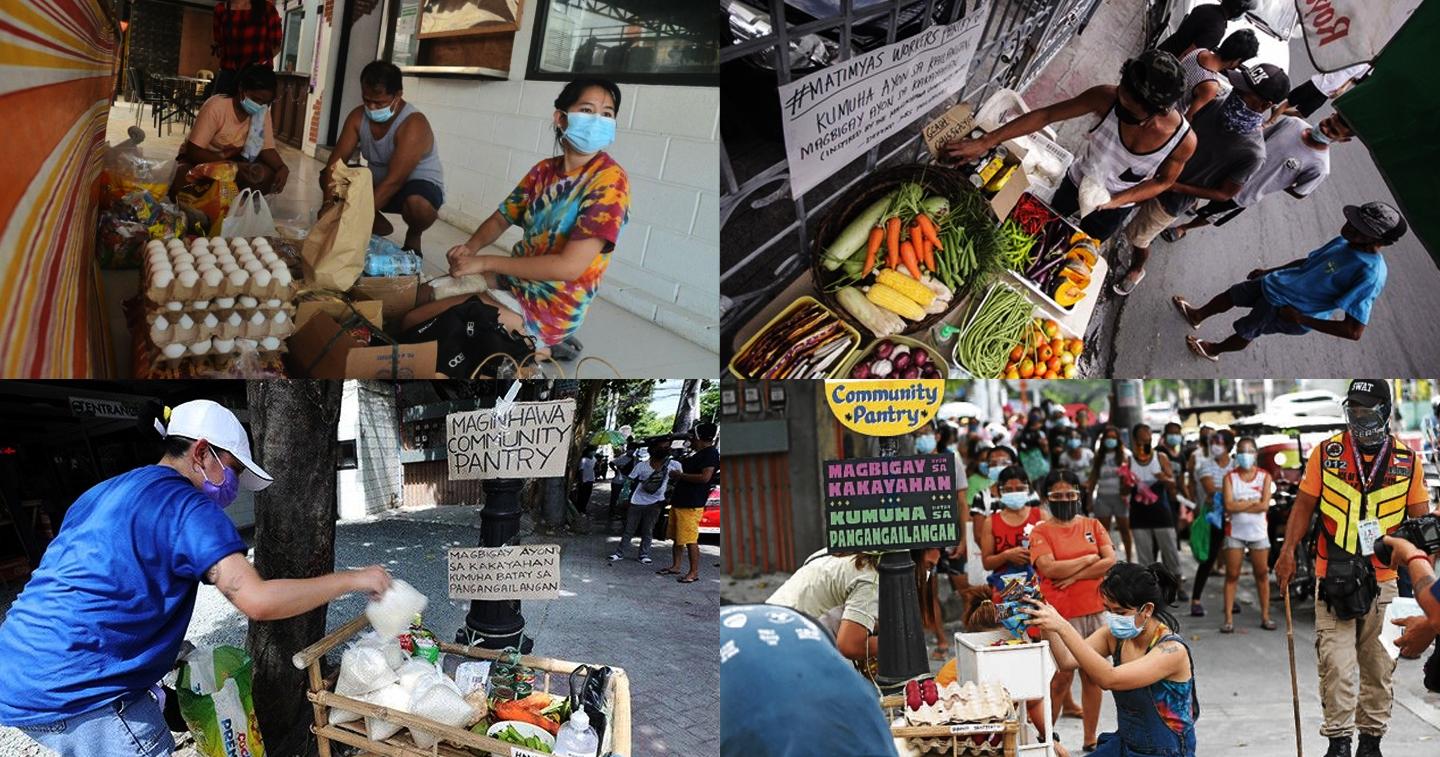MANILA, PHILIPPINES — “Kumuha base sa kailangan, magbigay base sa kakayahan.”
Take what you need, give what you can.
The phrase above can be seen in signs all over the Philippines. Written on paper or cardboard, the sign directs people to what is known today as a community pantry.
Community pantries have been sprouting all over the Philippines to help those in need. With simply a table as the pantry, kitchen staples and other necessities are placed on it where people can access it easily. All of these are initiated by groups of people who simply want to help. There is no organization that people need to join to start this because anyone can start their own community pantry from wherever they live in the Philippines.
The community pantry was first started by Ana Patricia Non along Maginhawa street. With only a handful of groceries and essentials, Non set up a bamboo cart along Maginhawa and then put up a sign that encourages people to take what they need and leave what they can.
Once Non made the community pantry public on Facebook, it wasn’t long before donations poured in. Today, the first community pantry in Maginhawa is now a hub that distributes donations to other pantries as well. And ever since Non’s post went viral, people all over the country started adapting Non’s community pantry model to help the communities in their respective areas.
Exemplifying the Filipino ‘Bayanihan’ Spirit
This Filipino trait of working together and helping each other can always be felt whenever there are natural disasters in the country. However, the COVID-19 pandemic emphasized the Filipinos’ ‘bayanihan’ spirit and now, the model of the community pantry is making it easier for people to lend a hand to those in need.
The concept of the community pantry is similar to bartering in the olden days. When there was a lack of money, people resorted to exchanging goods and services to live. The same can be seen in the community pantries. Those who are capable give what they can and those who are in need take them.
While it’s so easy to abuse a system like this, the community pantry model has worked. Instead of people hoarding the supplies in one go, those who line up to get what they need understand that there are a lot who need them as well.
While lifting houses with the help of your neighbors isn’t that common anymore, the ‘bayanihan’ spirit among Filipinos is alive and well.
The rise of community pantries is proof of that.








